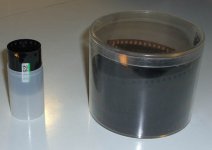I know the people here are biased toward traditional methods -- and I admit I am too -- but the one thing that the "digital darkroom" gives me is the ability to print at home, something I do not have the skill for or the room for when considering traditional wet printing. This is especially true when considering the fact that I shoot color almost exclusively.
Yes, I've wet printed B&W at times, in college and with friends' darkrooms, but there's no way I could get the results I get with any kind of a home wet darkroom set-up.
And, probably more important, what scanner. And have you found any techniques away from the standard ones particularly helpful?
I've had great luck with the K-M SD IV, the one that became an orphan shortly after I got it!
🙁 I've actually done some rather stunning 12x18 prints from scans I did on it.
As far as technique, I've found that attention to detail all around is the most important thing there is when scanning and printing, everything from being sure the negative or slide is clean, to being sure there's no reflection from the window in the monitor when editing, to being sure you feed the printer what it wants to eat.
🙂
A couple things that work for me is to always scan at max resolution, 16 bits, multiple passes, when intending to do a show-off print. You can always re-size or re-res later. Another thing I do is use the scanner software only for scanning, maybe some minor levels and such, then do all of the real editing in Photoshop after the scan is done.
My new printer (HP 9180) is very tolerant of taking almost anything and giving a great print. My older one (a HP 720, a hand-me-down from my ex) was more picky, and for a long time I thought it was not capable of a show-off print. Then a local guy here gave me a test image file they use to check the Fuji Frontier and told me to print it exactly as is, don't re-size or re-res and I was AMAZED at the quality. The trick is, you send it EXACTLY 300 dpi, EXACTLY the size you want, and the results are amazing. If you let the printer and software re-size or re-res, you get those jaggedy lines and such.




